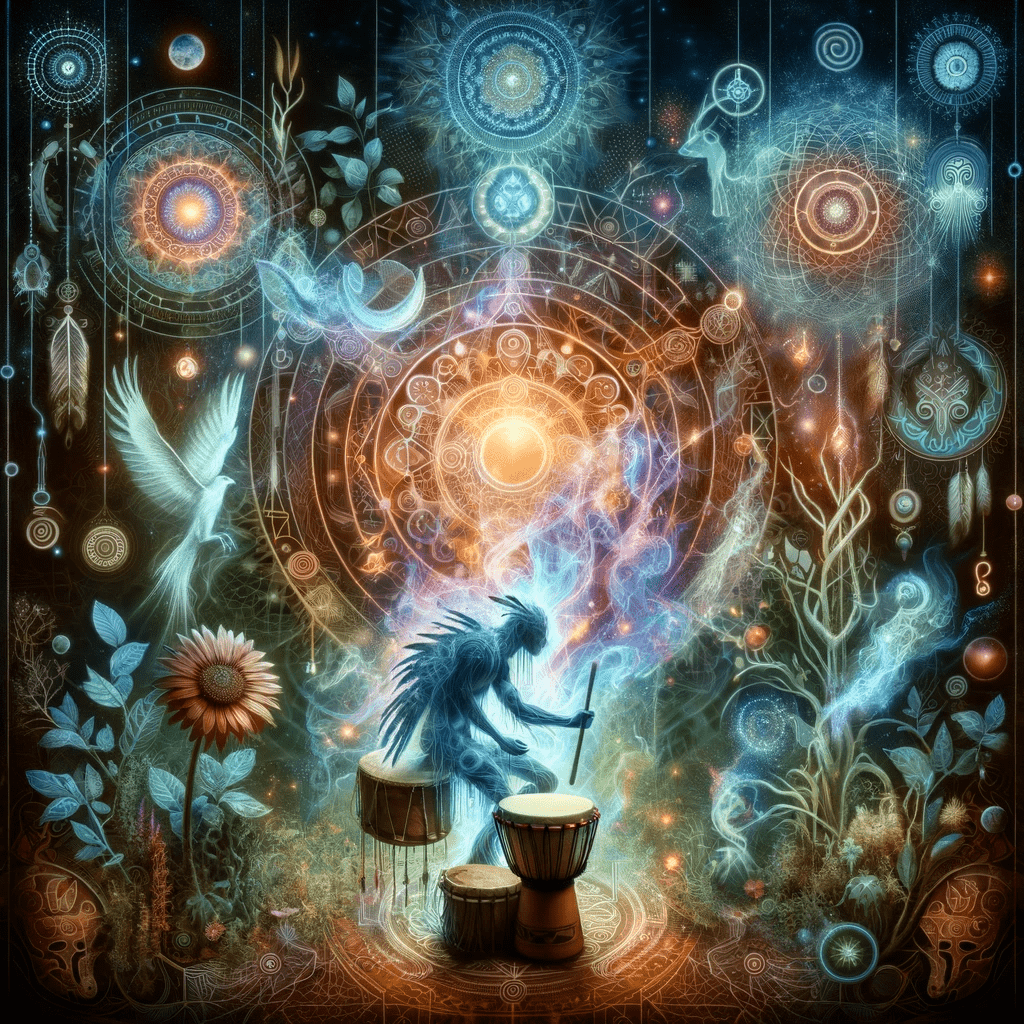Shamanism

Shamanism is an ancient spiritual practice that has been present in various cultures across the globe for thousands of years. It is rooted in the belief that shamans, who are spiritual practitioners or healers, possess the ability to communicate with the spirit world and harness its powers to address the needs of their communities. Shamanism has been practiced by indigenous people in Asia, Africa, the Americas, and Oceania, with each region exhibiting its unique cultural elements and rituals.
Shamans act as intermediaries between the physical and spiritual realms, and they often use trance states or altered states of consciousness to access the spirit world. These altered states can be achieved through various means, including dancing, drumming, fasting, and the use of plant-based entheogens. Once in the spirit world, shamans may perform a variety of tasks, such as healing the sick, divination, spirit negotiation, or soul retrieval.
One of the earliest known accounts of shamanism comes from the prehistoric Tungus people of Siberia, dating back as early as 3000 BCE. Shamanic practices have been discovered in archaeological evidence from even earlier periods, such as the Upper Paleolithic period around 40,000 years ago. In recent times, there has been a resurgence of interest in shamanism and its potential for providing alternative methods of healing and personal growth.
While many aspects of shamanism remain shrouded in mystery, some scientific research has sought to understand the underlying mechanisms at work. Studies have shown that shamanic practices, such as drumming and dancing, can induce altered states of consciousness, which may facilitate the release of endorphins and other neurochemicals that promote healing and well-being (Source: Journal of Psychoactive Drugs, July 2003). In addition, research conducted at the University of California, Los Angeles (UCLA) demonstrated that shamanic healing rituals can lead to measurable changes in brain activity associated with decreased stress and increased feelings of relaxation (Source: UCLA Newsroom, February 2011).
- Shamans often use entheogenic plants, such as ayahuasca, which contains the powerful hallucinogen dimethyltryptamine (DMT). Researchers at the Beckley Foundation and the University of Exeter have found that ayahuasca can have therapeutic effects on depression and addiction, possibly due to its ability to induce a profound sense of spiritual connection (Source: Frontiers in Pharmacology, February 2018).
- A study published in the journal “Cultural Anthropology” reported that the San people of southern Africa use a specific dance, called the healing or trance dance, to induce altered states of consciousness, which they believe enables them to access the spirit world and channel healing energies (Source: Cultural Anthropology, August 1994).
- According to a study conducted by the University of Tartu in Estonia, the ancient practice of soul retrieval, wherein shamans seek to restore a person’s spiritual essence, has been found to have potential psychological benefits, such as increased self-awareness and personal integration (Source: Journal of Ethnobiology and Ethnomedicine, December 2007).
Experts in the field of shamanism have varying opinions. Dr. Michael Harner, an anthropologist and founder of the Foundation for Shamanic Studies, has been a strong advocate for the integration of shamanic practices into modern therapeutic modalities. He argues that these practices offer valuable insights into the human psyche and have the potential to promote healing and personal growth.
Many books on the subject of shamanism explore its historical roots, cultural practices, and potential applications. One example is “The Way of the Shaman” by Michael Harner, which offers a comprehensive introduction to the practice and provides techniques for accessing the spirit world. Another example is “Shamanism: Archaic Techniques of Ecstasy” by Mircea Eliade, which looks into the historical and cultural aspects of shamanism across various societies.
Some authors and researchers have explored the connections between unidentified phenomena (UAPs), aliens, and shamanism. These works often consider the similarities between shamanic experiences and modern reports of extraterrestrial encounters, focusing on altered states of consciousness, out-of-body experiences, and otherworldly beings.
Some notable books and authors in this area include:
- “Supernatural: Meetings with the Ancient Teachers of Mankind” by Graham Hancock: This book looks into the potential connections between shamanism, altered states of consciousness, and encounters with supernatural beings, including those that might be labeled as UFOs or aliens.
- “Passport to Magonia: On UFOs, Folklore, and Parallel Worlds” by Jacques Vallée: This book examines the similarities between modern UFO encounters and ancient legends, fairy tales, and shamanic experiences. Vallée, a respected UFO researcher, posits that these phenomena may all be manifestations of the same underlying reality.
- “The Cosmic Serpent: DNA and the Origins of Knowledge” by Jeremy Narby: This book explores the links between shamanic experiences, DNA, and the possibility of extraterrestrial intelligence. Narby proposes that shamans may access information encoded in DNA during their altered states of consciousness, leading to encounters with otherworldly beings.
- “DMT: The Spirit Molecule: A Doctor’s Revolutionary Research into the Biology of Near-Death and Mystical Experiences” by Rick Strassman, M.D.: While not specifically about UFOs or aliens, this book investigates the powerful psychedelic compound DMT, which is known to induce intense experiences, including encounters with otherworldly entities. Some researchers have suggested that these experiences may be related to shamanic visions and UFO encounters.
It is important to keep in mind that these connections are speculative, and further research is needed to establish any definitive links between shamanism and UFO or alien phenomena. Nonetheless, these works provide fascinating insights into the potential intersections between ancient spiritual practices and modern-day reports of unexplained phenomena.


